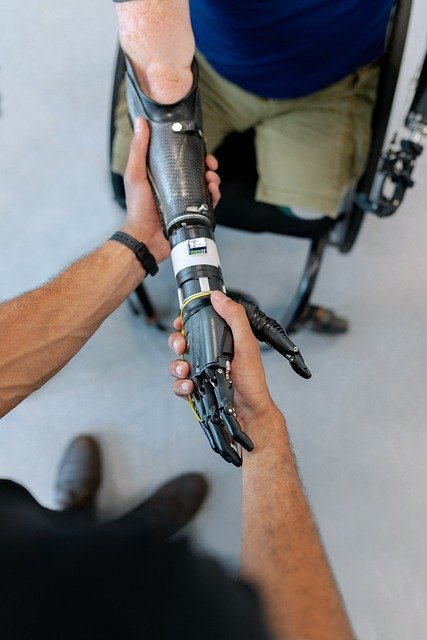CRISPR
CRISPR is changing gene editing forever. Researchers had no idea they could change the genetic code of living cells quickly and easily. CRISPR, which functions like a pair of scissors. It can precisely delete, insert, or edit specific bits of DNA inside cells, which now makes that possible. A side project fueled by curiosity about how bacteria fight viruses led to the discovery of this revolutionary gene-editing tool. Following significant discoveries regarding CRISPR, Drs. In 2020, Jennifer Doudna and Emmanuelle Charpentier were awarded the Nobel Prize. The first CRISPR-based cancer immunotherapy clinical trial in the United States began a year earlier, and additional studies are investigating CRISPR-based cancer treatments. Utilizing CRISPR directly in the body is also being tested in trials. CRISPR is a game-changer, but it still has some drawbacks, and the ethics of gene editing are still up for debate. However, one thing is certain: CRISPR is a potent tool that has the potential to significantly advance cancer research and other fields.
Artificial intelligence
Programming a computer to act, reason, and learn is artificial intelligence (AI), which is used to improve cancer diagnosis, drug development, and precision medicine. It is particularly useful in scientific research because it excels at identifying patterns in large amounts of data. The Frederick National Laboratory for Cancer Research, the National Cancer Institute (NCI), the Department of Energy, and a transdisciplinary group of researchers are using AI to advance the creation of digital twins for cancer patients. Others use it to tailor patients’ radiation doses by analyzing imaging data and electronic health records. AI is even being used to estimate the likelihood of certain cancers and quickly analyze population-based cancer data. Furthermore, AI has the potential to truly transform cancer care, and these examples only scratch the surface.
Telehealth
Bringing cancer care, treatment, and clinical trials to the patient Even during a pandemic, providing cancer care and conducting clinical trials are essential. In order to successfully incorporate or expand telehealth practices, numerous healthcare organizations that were a part of the NCI Community Oncology Research Program (NCORP) provided patients with cancer treatment and care remotely. By utilizing telehealth for remote health monitoring, video visits, and even in-home chemotherapy, these hospitals and clinics are maximizing patient safety and convenience across the nation. Additionally, telehealth facilitates patient access to clinical trials and cancer care for broader demographics of patients.
Cryo-EM
Creating high-goal pictures of how atoms act to assist with illuminating malignant growth treatment
Cryo-electron microscopy (cryo-EM) catches pictures of particles that are ten-thousandths the width of a human hair, at goals so high they were incomprehensible simply 10 years prior. Researchers reconstruct 3-D images of molecules that enable scientists to study how they behave by analyzing hundreds of thousands of cryo-EM images, similar to sorting through multiple candid photos before posting the “good” ones on social media. This means gaining a deeper comprehension of how cancer cells interact with therapies and other cells to survive, grow, and spread. At the Frederick National Laboratory for Cancer Research, cryo-EM recently demonstrated how a drug for chronic myeloid leukemia interacts with ribosomes and produced the most comprehensive view of a human ribosome to date. This achievement has the potential to guide the development of cancer and other disease treatments.
Infinium Assay
The Infinium Assay, developed by Illumina, is a procedure and set of tools for analyzing millions of single nucleotide polymorphisms, or SNPs, the most common type of genetic variation. It provides important insights into how genetic variations relate to cancer. SNPs can provide insight into cancer risk, progression, and development as well as help map the genes that cause cancer. The assay, which was developed with support from NCI’s Small Business Innovation Research program and is a compelling example of taxpayer-funded innovation, was initially met with skepticism regarding whether this technology was technically feasible. The assay is now used for a lot of different things, like cancer research and ancestry reports, the NIH’s All of Us Research Program, and even looking at a plant’s genome to see what influences its resistance to drought and insects.
Robotic Surgery
Robotic arms are used to perform precise, minimally invasive surgeries to remove cancer. This allows for a quicker recovery and a return to normal life. Prostate cancer patients may need to have their prostate gland removed (a prostatectomy), which can now be performed with the assistance of robotic arms that enter the body through small incisions. Previously, this procedure required cutting a large incision from the navel to the pubic bone. A specialized console is used by a surgeon to control the arms and provides a magnified, real-time view of the surgical site. In the prostatectomy example, a patient could leave the hospital as soon as the day after surgery thanks to robot surgery, which results in less pain and blood loss. Even though the robotic arms may appear to be straight out of a futuristic movie, their fine, precise motions can make a world of difference in a situation where only a few millimeters stand between removing all cancerous tissue and possibly injuring healthy tissue.

